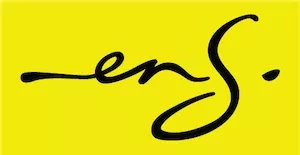- within Intellectual Property topic(s)
- in United Kingdom
- with readers working within the Technology, Media & Information and Property industries
- within International Law, Environment and Finance and Banking topic(s)
Amazon's Patent Evaluation Programme ("APEX") is a voluntary, streamlined mechanism that enables United States patent holders to address suspected infringement on Amazon.com swiftly and at comparatively low cost.
What is APEX?
APEX is an internal Amazon procedure in which a neutral, Amazon-appointed US patent attorney evaluates whether a product listed on Amazon.com infringes a single asserted claim of a United States utility patent. The programme does not create legal precedent and applies only to Amazon's US marketplace, yet it frequently operates as an effective deterrent against online copycats.
Eligibility
Eligibility for APEX is limited to granted US utility patents and
the patentee must have standing to enforce the patent within the
United States.
Design patents and patents granted outside the US are not eligible
for the programme. Additionally, each APEX request must be limited
to a single patent and a single claim.
Step-by-step process
The APEX process begins when the patent holder submits a request through Amazon's portal, including a detailed claim chart that maps each claim limitation to features of the accused product that are visible to the public. This submission must be accompanied by a refundable USD 4,000 deposit. Once the request is filed, Amazon notifies each implicated seller, who then has three weeks to respond. Sellers may choose to remove their listings, decline to participate (which results in automatic removal of the listings), or opt into the evaluation by paying a matching USD 4,000 deposit. If at least one seller opts in, Amazon appoints a neutral evaluator to review both the patentee's claim chart and the seller's rebuttal, relying solely on publicly available information, as no discovery is permitted. A written determination is typically issued within approximately 90 days of the seller's opt-in. If the evaluator finds infringement, Amazon removes the relevant listings; if not, the listings remain. The deposit from the losing party is used to pay the evaluator's fee, while the prevailing party's deposit is refunded.
Costs and fees
The direct costs associated with APEX are generally LIMITED to the USD 4,000 deposit, which is refunded if the patentee prevails, and any professional fees incurred in preparing a robust claim chart. In comparison, traditional US patent litigation can easily exceed USD 500,000, making APEX a significantly more economical initial enforcement option.
Advantages
APEX offers several notable advantages. The process is swift
listings may be removed within weeks if sellers choose not to
participate, and final determinations are typically delivered
within four months. The programme also acts as a deterrent, as many
sellers opt to remove their listings without contest, saving the
patentee additional expense. Accessibility is another benefit,
since the entire process is conducted online and does not require
the patent holder to be physically present in the United States.
Furthermore, although APEX outcomes are non-precedential, a
favourable result can enhance the patentee's leverage in
subsequent negotiations or litigation.
Limitations and strategic considerations
There are important limitations and strategic considerations to keep in mind. APEX is restricted to one claim and one patent per request, and the evaluation is based solely on features of the accused product that are publicly visible; hidden or internal characteristics are unlikely to meet the evidentiary standard. The procedure does not provide for monetary relief—no damages, profits, costs, or attorney-fee awards are available. The evaluator's decision is non-precedential and does not bind courts or other marketplaces. An adverse outcome may even embolden future infringers. Additionally, deposits must be paid in US dollars, and it is advisable to have a US correspondence address to ensure smooth communication.
Practical tips for patent holders
Patent holders considering APEX should first ensure that the asserted patent is valid, enforceable, and properly recorded. It is advisable to select the claim that can be most easily proven using information visible on the product listing. High-quality screenshots and supporting evidence should be prepared at the time of filing. Strategic timing, such as submitting a request ahead of peak sales periods like Black Friday, can maximise impact. Finally, engaging counsel with experience in both US patent law and Amazon's procedures can significantly improve the likelihood of a successful outcome.
Conclusion
For a patent holder confronting infringing listings on Amazon.com,
APEX offers a rapid, cost-effective, and largely self-contained
enforcement option. When used strategically, either as a standalone
remedy or in conjunction with traditional enforcement measures, the
programme can protect market share and deter copycats while
conserving considerable time and resources.
The content of this article is intended to provide a general guide to the subject matter. Specialist advice should be sought about your specific circumstances.



